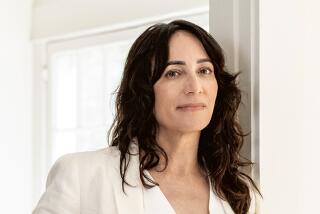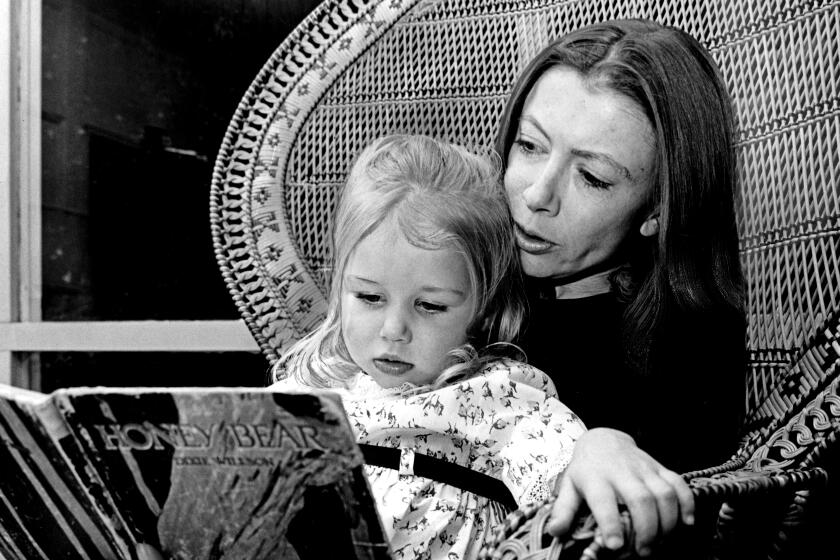BOOK REVIEW / NOVEL : The Path to Womanhood Cuts Across 2 Color Lines : COFFEE WILL MAKE YOU BLACK, <i> by April Sinclair</i> ; Hyperion: $19.95, 239 pages
- Share via
Alongtime favorite as a work in progress on the Northern California reading circuit, April Sinclair’s off-beat debut novel, “Coffee Will Make You Black,” tells the story of Stevie, a black girl growing up in the 1960s on Chicago’s South Side. Whether she’s dealing with a subject as monumental as the civil rights movement or as intimate as Stevie’s first sexual encounters, Sinclair never fails to make you laugh and never sacrifices the narrative to make a point.
“Mama, are you a virgin?” is the first line in the book, and in one simple sentence we see both Stevie’s naivete and her boldness. She is bold because Mama is a no-nonsense woman intent on bettering her family’s--and in particularly Stevie’s--lot. Mama, the first black teller at First National Bank, like so many blacks of her generation, is obsessed with skin color; hence, the novel’s title.
“Coffee will make you black” was said to discourage children from drinking coffee, because no one wanted to be as dark as coffee. “The only thing I want black is a Cadillac,” was another popular saying. In the ‘50s and ‘60s, there were a hundred maxims that prized light-skinned blacks over their darker brothers and sisters. Sinclair makes good use of them all, with the anthropological flair that Zora Neale Hurston employed in “Their Eyes Were Watching God.”
While Stevie’s mother, a dark-skinned woman, holds on to outdated notions of skin color, Stevie’s grandmother, a progressive business owner, is quick to jump onto the ‘60s bandwagon of “Black is beautiful.” When Stevie decides to shun her mother’s teaching and get an Afro, it is her grandmother’s pride that gives her strength to do so:
“Grandma, how come your skin’s so soft and smooth? Do you use Ivory liquid?”
“Chile, good black don’t crack,” Grandma answers. Grandma carries herself like a queen. She’s tall and big-boned and wears her gray hair in French braids. She has what she calls laughing eyes and says she’s proud of her large nose and full lips.
Stevie’s world is the South Side of Chicago, but Sinclair doesn’t objectify the neighborhood and gives the story all the tenderness of “Our Town.” She steers clear of both the harsh ghetto portrayal of TV’s “Good Times” and the theatrical drama of “A Raisin in the Sun.”
Yet even at an early age, the people around Stevie work hard not to insulate her from what they see as the hard, cold realities of a black woman’s existence. As her best friend’s mother tells her: “There is nobody out there for you. If you make it in this world, you’re gonna have to make it by your lonesome. Do you hear me? Cinderella was not written about the Negro woman. Do you understand?”
In the beginning of the novel, Stevie is obsessed with being cool; pretty soon, she achieves her goal. Her spunk and outspokenness enable her to become best friends with the most popular girl in the school, Carla.
But as the civil rights movement grows and Stevie enters high school, she begins to shift her priorities. She is no easy revolutionary, but within her things are changing. It is in these deft passages that we see Sinclair’s talents as a writer emerge. One of the most moving moments in the book is when Stevie’s mother, so often distant and reserved, surprises her with a present--a bag full of bleaching creams:
“ ‘Mama, where have you been? Don’t you know that black is beautiful?’
“ ‘I know that black is supposed to be beautiful, but you use these bleaching creams, just in case.’
“I looked up from the angle I was drawing. ‘Just in case what, Mama?’
“ ‘Just in case it’s a fad and people go back to thinking the way they’ve always thought. Don’t fool yourself. Deep down, black men are still colorstruck. . . . You’re from the wrong side of the tracks. You can’t afford to be too dark on top of it.’ ”
Although Stevie dates several guys throughout the course of the book, she is most troubled by her friendship with an older, white woman--Nurse Horn. Whether it’s a school-girl crush or something more, Stevie’s feelings bother her . . . and her cool best friend, Carla.
By the end of the novel, it is unclear what Stevie’s sexual orientation is. What is clear is that Stevie is a wonderful character, whose bold curiosity and witty self-confidence--through Sinclair’s straight-talking words--make her easy to love.
More to Read
Sign up for our Book Club newsletter
Get the latest news, events and more from the Los Angeles Times Book Club, and help us get L.A. reading and talking.
You may occasionally receive promotional content from the Los Angeles Times.










